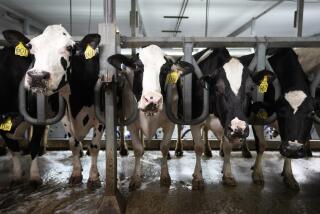Invasive fruit fly species puts parts of Orange County under quarantine

- The California Department of Food and Agriculture has placed the cities of Santa Ana and Garden Grove under quarantine to try to stop the spread of the oriental fruit fly.
- The state has also started using an organic pesticide in the area to try to prevent the flies from breeding.
The cities of Santa Ana and Garden Grove have been placed under quarantine Wednesday in light of an uninvited and unwelcome visitor: the oriental fruit fly, an invasive pest that attacks over 230 crops including fruits, nuts and vegetables.
The order by the California Department of Food and Agriculture bars fruit from within the quarantine zone from being distributed outside of it. The goal is to keep the oriental fruit fly from spreading to more crops while working to eliminate the pest.
The quarantine zone in Orange County measures 87 square miles, bordered on the north by Anaheim, on the south by John Wayne Airport, on the west by Huntington Beach, and on the east by State Highway 55.
Residents living in the quarantine zones can help prevent the spread of the oriental fruit flies by not moving those crops from their property. Residents can consume or process (juice, freeze, cook or grind in a garbage disposal) their homegrown produce if it hasn’t been contaminated. For residents who prefer to dispose of their crop, the food and agriculture department recommends double-bagging it and placing it in the regular trash, not the green waste bin.
Female oriental fruit flies contaminate fruit by laying eggs inside it, according to the California Department Food and Agriculture. The eggs then hatch into maggots, which tunnel through the flesh of the fruit, making it unfit for consumption.
The infestation cycle continues when the maggots emerge 10 days later, drop from the fruit and burrow two to three centimeters into the dirt to pupate. In 10 to 12 days, adults surface to feast for roughly 90 days on honeydew melon, decaying fruit, plant nectar and bird dung. An adult fruit fly is a strong flier that’s been known to travel 30 miles in search of food and sites to lay eggs, giving it the ability to infest new areas quickly, according to the food and agriculture department.
When a medfly quarantine in L.A. ended this summer, you could be forgiven for asking, “A what quarantine?” This is the tale of California’s long fight against an agricultural pest.
The oriental fruit fly is widespread throughout much of the mainland of southern Asia and neighboring islands, including Sri Lanka and Taiwan, and it has invaded other areas, most notably Africa and Hawaii.
The fly species was first found in California in 1960 and has been reintroduced every year since 1966 by infested fruits and vegetables coming into the state.
Crops at risk of this particular invasive species include pome and stone fruits, citrus, dates, avocados and many vegetables, particularly tomatoes and peppers.
Agricultural officials are working to eliminate the infestation by applying a small patch of fruit fly attractant mixed with a very small dose of an organic pesticide, Spinosad, about 8 to 10 feet off the ground on street trees, power poles, street lights and similar surfaces. Male fruit flies are attracted to the mixture and perish after consuming it.
This program is being carried out over an area that extends 1.5 miles from each site where the oriental fruit flies were trapped, according to the food and agriculture department.
While fruit flies and other invasive species are sometimes detected in agricultural areas, the vast majority are found in urban and suburban communities. The most likely pathway for these pests to enter the state is by “hitchhiking” in fruits and vegetables brought back illegally by travelers as they return from infested regions of the world, or in packages of home-grown produce from other countries sent to California.
More to Read
Sign up for Essential California
The most important California stories and recommendations in your inbox every morning.
You may occasionally receive promotional content from the Los Angeles Times.












